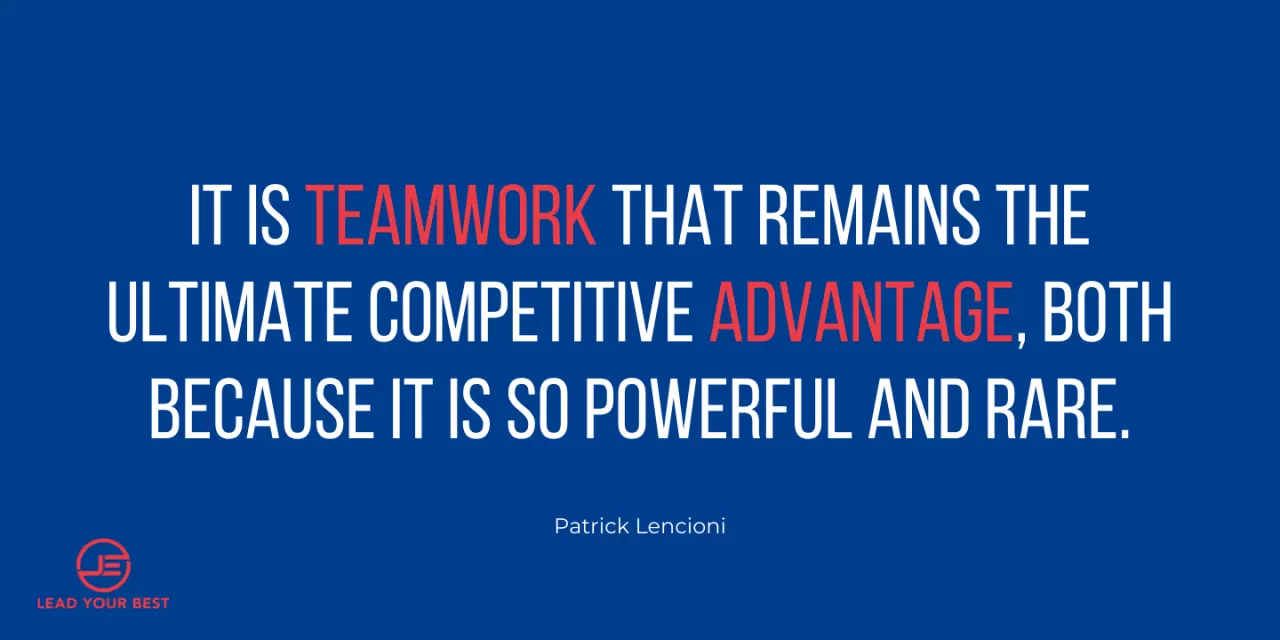Comments
- No comments found

It doesn't take a rocket scientist to figure out some groups of people perform better than others.
Not only do high-performing teams produce better business outcomes, but their team members are engaged, feel like they belong, and contribute towards the team's success.
There have been many great studies about what makes a team successful. Including Google's two-year study that found there were five characteristics of enhanced teams, with the most important being psychological safety. While psychological safety is essential, there is another common thread of all high-performing teams, a shared goal.
A team, by definition, is a group of individuals working together to achieve a goal. While the explanation is simple, almost everyone has been a part of a group that wasn't working to achieve a shared goal. This is precisely where many managers fail. They assume that because of their position, they lead a team, and this couldn't be further from the truth.
Just because you manage a group of people doesn't mean you lead a team.

Leaders think and act differently than managers. They realize a group of people can work well together without a shared goal, but the likelihood of sustaining success or staying together when adversity hits are very low.
I have found coaching so many effective leaders that they are not only obsessive about gaining buy-in towards a shared goal, but they do a few other things to build a successful team. If you want to emulate them, here are a few things to remember.
Conventional wisdom says the person at the top of the hierarchical org chart is the only leader, but that would be wrong. For any team to reach heights they never thought possible; it needs leaders at every level.
For any team to reach heights they never thought possible, it needs leaders at every level.
While this can be difficult to institutionalize, it starts with changing your mindset that you are the only leader. Once your heart and mind are in the right place, you have to teach others what it means to be a leader and why it's so important they lead right where they are.
In 'Building the Best", I defined leadership this way: "Someone whose actions inspire, empower, and serve in order to elevate others."
There are two keywords here; elevate others. Every single member of your team, regardless of their role or title, can elevate others. It often just takes a leader like you, who invests in the leadership development of others to help make this a reality.
A recent estimate suggests that employees endure a staggering 55 million meetings a day in the United States. This tremendous time investment typically yields only modest returns. Add to the fact that the new remote and hybrid world of work is our new reality; the time leaders dedicate to coming together virtually or in-person must be time well spent. If done well, team meetings can be the backbone to build trust, develop teamwork, and mold culture.
The time leaders dedicate to their team coming together virtually, or in-person must be time well spent.
You can have quality and productive meetings by narrowing your focus on the purpose of each meeting and making sure each person is an active participant. While this can be difficult, there might be nothing more important in your business than having meetings that matter.
Leading a team today is more complicated than ever because of the constant pressure to create positive results immediately. While the best leaders care about the results, they lean into the journey instead of the immediate outcomes.
No team's journey is the same, but every team will experience adversity and failure. The leaders who keep their view on the long term instead of the short term will set their team up for success.
You can do this by getting your team to buy into the journey and embracing the process. As I wrote in a previous column, "focus on the gain, instead of the gap."
In many ways, the most challenging element of leadership is being a leader of consequence and holding people accountable. Accountability is a word that has been used so much that its meaning has been lost. The actual definition is, "The obligation of an individual or organization to account for its activities, accept responsibility for them, and to disclose the results in a transparent manner."
As I teach in our Leveraging Accountability workshops, the best leaders don't look at accountability as optional; they embrace the obligation because they know it's a key to a team's success. You can make accountability an obligation by praising people when standards are exceeded, acknowledging people when standards are met, and giving direct feedback if your people fall short of those standards.
As that culture of accountability spreads, members of your team will hold each other accountable, and that's precisely when you know your team has arrived.
There is nothing easy about bringing together people from different places, with different strengths, and with different experiences to work together to achieve a common goal. However, I believe you are in your position for a reason and are just the person to make it happen.
The only question is, "are you willing to do the hard work necessary to make it a reality?"
What are other strategies you use or have observed other leaders leverage to create effective teams? Tell me in the comments.
John is the CEO of LearnLoft, author of, F.M.L. Standing Out & Being a Leader and host of the 'Follow My Lead' Podcast. He writes or has been featured on Inc.com, LinkedIn Pulse, TrainingIndustry.com, eLearningIndustry.com, CNBC Money, and more. John completed his education at the University of Maryland College.
Leave your comments
Post comment as a guest